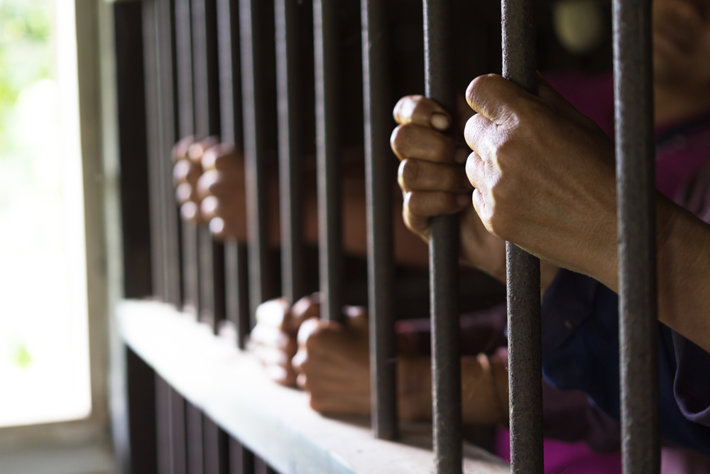Drug Addiction and Overcrowded Jails

The subject of drug addiction and incarceration has been a contentious one for some time. Many people still feel as though drug use is a crime and, therefore, should be punished as such. But as the years go by and as our understanding of addiction improves, more and more people are starting to see that drug use is indicative of a severe behavioral crisis. It is a horrible condition that has befallen the individual.
A lot of people are beginning to see that drug use is not a problem solved by jails or prisons. More people are beginning to see that drug users need help via residential treatment programs, not jail cells.
However, it would seem that many rural areas are behind the times on this point. And that is evidenced by the increasing jail populations in rural areas which are almost entirely comprised of inmates with drug problems. And what is worse, the living conditions that such inmates are being subjected to are totally inhumane.
A Story on Rural Jails: “Cesspools of Dungeons”
A December 2019 article in the New York Times focused on the grim reality of what many jails in America actually look like. Specifically, this article explored rural jails where overcrowding, terrible living conditions, and even human rights violations are seemingly commonplace. And, unfortunately, drug addiction has played a significant role in how such jails became so overcrowded. As the nation’s drug problem continues to grow, and as urban drug problems continue to expand out into rural areas, more addicts in rural towns and communities are caught using or carrying drugs by local law enforcement. The result? More jailing of addicts.
Inmates sleeping on mats in hallways. Lawyers meeting clients in broom closets. Horrible living conditions. These are the norm in a jail in Morristown, Tennessee, the focus of the NYT article. In the Morristown example, 439 inmates were being made to live in a jail designed to house just 255 prisoners.
How did this happen? According to the article, the methodology for approaching addiction looks entirely different in big urban centers as compared to rural areas. In urban areas, it’s becoming more common to direct drug users into the public health sphere, not the criminal justice sphere. Yet, for some reason, rural areas still hold to an old method of addressing addiction and drug use. And what’s worse, these are places where drug users are put into jails where conditions are so awful that drug offenders are made to live almost like animals.
“In the big city, you get a ticket and a trip to the clinic. But in a smaller area, you might get three months in jail.”

Jacob Kang-Brown, a senior research associate at the Vera Institute of Justice, commented on the disparity in how city law enforcement handles low-level drug offenders versus how rural law enforcement does. “In the big city, you get a ticket and a trip to the clinic. But in a smaller area, you might get three months in jail.”
In urban areas, jail populations have fallen by 18 percent since 2013. That’s good news. But it’s overshadowed by the fact that, during the same time period, jail populations climbed in rural areas by an alarming 27 percent.
After four decades of booming prison populations, revisions in sentencing laws are finally starting to cause state and federal prison populations to decrease. But these changes have not yet reached rural areas. Still, in rural America, drug addicts are incarcerated for failing a drug test while on probation, for shoplifting to feed a drug habit, for having a small number of drugs on them, etc. These are nonviolent, addiction-related crimes, yet they come with a substantial penalty, a lengthy jail sentence, and bail set far too high for most individuals to afford.
The underlying problem in rural areas expands beyond the jail system. The New York Times article indicates that the jail issue is simply a manifestation of a much bigger problem in rural America, i.e., a lack of public health opportunities. Rural counties might want to send addicts to treatment instead of jail, but there are no affordable treatment options. Even rural hospitals are closing down.
Quoting the NYT article: “Many small cities and rural areas haven’t embraced efforts to make it easier for nonviolent offenders to get on with their lives after scrapes with the law. And even in rural areas that might favor more treatment over incarceration, hospitals have shut down, limiting their choices.”
Treatment is The Only Solution For Non-Violent Drug Offenders

To incarcerate someone whose only “crime” is that of being an addict is quite foolish. Addicts need help via residential drug treatment, not confinement in a jail cell. Judging from general prison conditions and environments like the ones mentioned earlier, it’s more likely that an addict will become worse off from time spent in jail.
A prison system that jails individuals in an environment that cannot help them is a flawed system. Addiction treatment, however, can help individuals get better. The kind of individuals who are arrested on charges of possession with no intent to distribute are individuals who were only purchasing and carrying drugs because they were feeding their own, mind-numbing, body-aching dependencies. These are not hardened criminals. These are not persons who are committing crimes with malice aforethought. These are addicts.
We need to reform criminal justice in such a way that addicts get routed to residential drug treatment centers, not jail cells. Thankfully, some local areas are already doing this with success. The LEAD program (Law Enforcement Assisted Diversion) comes to mind. That’s a program within the King County, Washington State police force which helps addicts enter drug treatment, not jail. Another program in Gloucester, Massachusetts, is doing something similar.
We have to help addicts. That much is clear. And we are not helping them by jailing them. If anything, we’re making things worse. For those of us who know someone who is struggling with drug and alcohol addiction, we need to do everything we can to get that individual into treatment, and soon. And for the rest of us, we need to raise awareness of the problem, get others educated about it, and work to reform prison policy and criminal justice in such a way that addicts get help, not prison sentences.
Sources:
- https://www.nytimes.com/2019/12/13/us/rural-jails.html
- http://leadkingcounty.org/
- https://gloucesterpd.com/addicts/


 ®
®